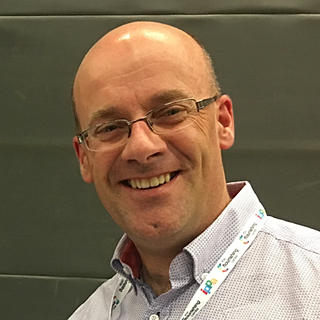Developing Flow for ski instructors and their guests
- Derek Tate
- Dec 21, 2019
- 3 min read
Updated: Jun 24, 2023
Last Thursday I had the pleasure of delivering a training day on 'flow' for European Snowsport Nendaz Ski School as part of their pre-season formation week. The ski school is headed up by Jamie Kagan and Mel Swinburn and Mel and fifteen of the instructors attended the days training.

Format of the day
Indoor briefing
The day began with an indoor session in a cafe in Siviez. Many of the team were still getting to know each other and there was a great mixture of nationalities, backgrounds, experience and qualifications from different national certification organisations; NZSIA, CSIA, IASI and BASI. Included in this session was an introduction to what 'flow' is all about and what it is like to experience. Laminated flow cards helped to describe the 10 components of flow; 4 foundations and 6 characteristics (Tate, 2019). More time was spent on the 4 foundations; clear goals, unambiguous feedback, challenge-skills balance and focused attention as this was important for the morning session on snow that would follow. Given that the construct of flow was relatively new to the team my own goal was that everyone should be really clear about the foundations of flow, by the end of the day, as irrespective of whether learners enter a flow state the four foundations represent a great teaching and learning connection between the instructor and their guest.
Morning session
With such a large team (16 in total) it was more effective to work in smaller groups of three and four and for each run (lap of the gondola) one of the group would set a task (in collaboration with the rest of the group) and then develop this with the performers during the descent. The main aim here was to ensure that each of the four foundations were achieved hence the task had a clear goal, the performers were able to measure their success through intrinsic feedback, the level of challenge was considered and often increased over the duration of the run and finally the performers knew where to focus their attention. After each run the whole group came together for a short review, which included some discussion about how these flow foundations work with learning zones. Additional benefits to the morning session were that the instructors were able to share and exchange ideas (drills and exercises) and how they explain these to their learners. It also helped to build the team.
In addition to the descents tasks were set (by myself) for each of the gondola rides (making full use of lift riding time). The emphasis here was the lift riding time is lesson time and instructors should make this time as productive as possible. The tasks that were set all centred around mindful communication activities (Tate, 2019).

Afternoon session
The afternoon was all about 'attention' and how and where to focus. The idea of BEE Focused was introduced e.g. Body, Equipment and Environment. Working in pairs the team explored performing while focusing on either the movements of their body, their equipment or the wider environment. This led to the idea that in order to move from Focused Attention (and a busy mind) to more Effortless Attention (a characteristic of flow) that their attention needed to move to a more external focus. My recent blog on Focus of Attention in Sport: Internal or external? covers this in detail.

The final part of the day involved some team synchronised skiing while challenging the performers to keep their attention fully on task! It was an extremely enjoyable day to deliver and everyone participated fully. My hope is that this gives each instructor some knowledge and ideas of how to create great learning experiences for their guests and perhaps even help them achieve flow state.
Thank you to Mel Swinburn for the super photos.
For ski schools that would like to develop their teams teaching and learning skills and understanding of flow click here for more information.
European Snowsport operate in a number of resorts throughout Switzerland and France including, Verbier, Nendaz, Zermatt, St. Moritz, Chamonix and Vlasti D'isere.
References
Tate, D. (2019). Dissertation for Masters in Applied Positive Psychology (MAPP): The 10 dimensions of the proposed new Fluctuating Attention model of Flow.
Tate, D. (2019). Focus of Attention in Sport: Internal or External? https://www.paralleldreams.co.uk/post/focus-of-attention-in-sport-internal-or-external
Tate, D. (2019). Learning Zones part 1: From preparation to flow https://www.paralleldreams.co.uk/post/learning-zones-part-1
About the Author
Derek Tate is an author, coach and teacher and runs Derek Tate Coaching. His mission is to help others to flourish and get more out of life through better mental, emotional, and physical health. He offers mental skills coaching, alpine ski coaching, online courses and workshops and writes self help/psychology books.





Comments